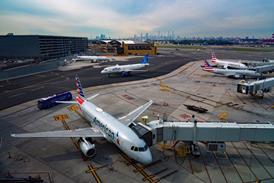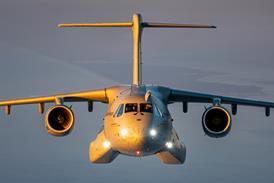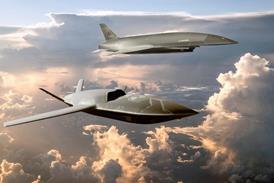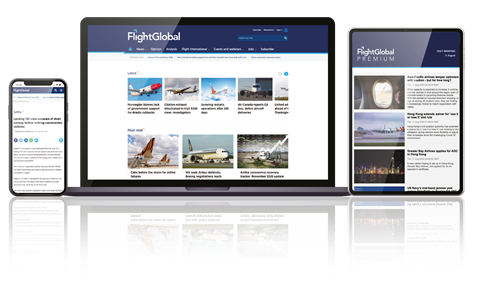Chris Dare, director, MRO services and solutions at Marshall, describes how the UK company is a global authority on the ubiquitous C-130 Hercules
Q: For those who aren’t familiar, can you briefly introduce Marshall’s MRO business?
We are a global MRO authority on the Lockheed Martin C-130 Hercules — a platform we’ve worked on since 1966.
We support C-130 fleets all over the world, from the Royal Danish Air Force to US Marine Corps squadrons stationed in Japan. Our capabilities range from all levels of depth maintenance including aircraft-on-ground support, modifications and life extension programs like centre wing box replacements and glass cockpit upgrades.
In 2023 alone, our teams completed over 23,000 MRO tasks across 450,000 hours of aircraft work, and we are on track for a similar level of activity this year.

Q: Marshall is one of a number of globally active C-130 MRO providers. What makes you different?
We have worked on almost every part of every C-130 model to have been produced. We have modified, modernised, overhauled and repurposed hundreds of these aircraft.
The depth of experience we have gained over nearly 60 years has earned us a level of recognition — both from Lockheed Martin and from our customers — that would be hard to surpass.
In addition to being the world’s first OEM-authorised Hercules Service Centre for legacy C-130 models, we are the world’s first Heavy Maintenance Centre for the current production model C-130J Super Hercules.
Uniquely, we have approval from Lockheed Martin to manufacture C-130J parts in-house, and we were also recently named the world’s only approved Centre of Excellence for centre wing box replacement work.
We set the industry standard for accurate scheduling and management of maintenance inputs, delivering high-quality, low-risk work with dependable turn-around times, providing predictable readiness and improved availability for our customers.
Q: The C-130 turned 70 this year. Do you worry that some will start to see it as outdated?
It can be tempting to mistake the C-130’s perennial popularity and consistency of design philosophy for lack of evolution, but in reality Lockheed Martin has done a masterful job of keeping the platform up to date where it counts, while not meddling with the fundamentals.
On one hand, the C-130 is still unmatched in terms of reliability, versatility and capability, which is why it’s still the world’s most popular tactical airlifter and has been in continuous production longer than any other military aircraft.
On the other hand, Lockheed Martin has kept the platform moving forward constantly for 70 years — whether through step-changes such as the jump from C-130H to C-130J, or through incremental improvements and new technologies, as exemplified by the Block 8.1 upgrades.
We should also not forget that many fleet operators simply need cost-effective and reliable airlift capability. Next to procuring an entirely new airframe, acquiring and operating a legacy C-130 model can represent a highly appealing choice (for example, through US foreign military sales and other re-entry into service programmes ).
Again, this is part of the perennial appeal of the C-130: it can be many things to many people.
The bottom line is that there are roughly 1,500 C-130 aircraft in service around the world at present, and Lockheed Martin’s order book extends well into the 2030s. For Marshall, this is a strong forward indicator of robust demand for MRO and sustainment work on new and legacy aircraft alike.
Q: Do you tend to target specific types or sizes of fleet?
Given the longevity and worldwide popularity of the C-130, and the diversity of approaches to acquiring and maintaining these aircraft, there is no such thing as a typical fleet operator — and our customer base reflects this.
The smallest fleet we look after operates a single aircraft, and the largest (the US Marine Corps) more than 70. In between, we have a large handful of customers with four or five aircraft.
Similarly, the fleets we look after are under completely different levels of operational strain in terms of flight hours per year, climate and environment, and airframe stress.
Aircraft age and model also varies significantly: many of our customers exclusively operate the newer C-130J model , but plenty operate fleets of C-130H or former RAF C-130K aircraft, and we even have a C-130B in our hangars that was built in 1959.
Ultimately, we are used to supporting a very wide range of customers through a finite number of MRO slots. Fleet size, mission type and airframe age matter much less than our ability to schedule inputs efficiently and deliver work packages tailored to the needs of each customer.
Q: Speaking of slots and inputs, what kind of capacity is necessary to support all these aircraft?
Our MRO Services and Support business line is based at Marshall’s HQ in Cambridge, UK, on the site of a fully operational airport.
We have a total of 14 dedicated MRO bays and a wide-body paint bay spread across four hangars of varying sizes — each with apron space and runway access for inputs, flight tests and delivery. We have roughly 300 fully qualified and experienced C-130 aircraft personnel on hand to support scheduled and unscheduled MRO requirements.
Our on-site support facilities include parts and components storage areas and an on-site manufacturing support hangar, which produces parts under authorisation from Lockheed Martin. We also own and operate the largest fully-enclosed engine test structure in Europe .
In the very near future, we will be significantly expanding our capacity and our global reach through the launch of a brand new C-130 MRO and engineering facility in the USA.

Q: Can you explain the value of being able to produce C-130 parts in-house?
When we strip down an aircraft during the course of a maintenance input, it’s not uncommon to find damage or failed parts that weren’t part of baseline maintenance but must be replaced or repaired to return the aircraft to an airworthy state.
This often adds a significant unplanned time requirement in terms of the need to procure spares — especially since certain parts have lengthy lead times or can be challenging to obtain altogether.
Being able to produce these parts in-house with Lockheed Martin’s approval significantly de-risks our maintenance inputs, since we can return our customers’ aircraft to service much sooner than would otherwise be the case .
We can also undertake urgent parts manufacture and support the rapid prototyping of new products, overseeing the full process from design, planning and purchasing through to manufacture, special processes, inspection and release.
Q: Can you share any specifics around your new US facility?
The new facility will be located in Greensboro, North Carolina, at Piedmont Triad International Airport. Our objective is to bring nearly six decades of C-130 support to fleet operators in the USA.
The facility is purpose-built from the ground up to support the C-130. Once finished, it will have six MRO bays and one narrow-body paint barn within a total of 190,000 square feet of hangar space.
On the broader 680,000 square foot site, we will have a ramp area with four additional slots and a taxiway onto the main runway of Piedmont Triad International Airport.
Q: You mentioned that the new facility is “purpose-built” for C-130 aircraft. What value do you think fleet operators will see in this?
The Greensboro site is designed as a bespoke facility for C-130 work, with planning and mobilisation led by the team that has managed delivery of Marshall’s work for the USMC over the past four years.
Facility layout has been designed to ensure that a C-130 can be easily positioned in every bay with no disruption to any other input. Each of the six maintenance bays and the narrow-body paint barn have been planned to enable the correct usage of aircraft maintenance staging, ranging from steps to full aircraft docking, depending on the requirements of the maintenance input.
These platform-specific optimisations will enable us to deliver high-quality work at high efficiency, around the clock. The end result is predictable availability — the holy grail for any C-130 operator.
Q: Where are you right now in the construction process? When will the facility be ready for start of operations?
We broke ground on the new site at Piedmont Triad International Airport in September 2023, and the pace of construction has been incredible. Just over a year later, the hangar building structure has been completed and the ramp area, taxiway and access road are being finished. We will formally take possession of the initial bays in January.
In October, we recruited our first crew chiefs—five US military veterans with aviation backgrounds. They will lead our teams of technicians, mechanics and support staff, taking responsibility for the safety, quality and allocation of all maintenance, repair and overhaul work.
As we move into 2025 we will start to ramp up recruitment further in line with our phased operational mobilisation approach. With focus on quality, safety and delivery to our customers.
By offering 24/7 support, we will minimise turn-around time and return aircraft to fleets sooner.
Q: How does the new facility sit within Marshall’s global operation — especially compared to your UK-based MRO and engineering work?
As an outright expansion of our global footprint, the presence of our Greensboro facility will be additive, not substitutive, for Marshall.
The USA is the world’s largest C-130 market, so a key role of our new facility will be to absorb some of this demand, unlocking opportunities we couldn’t have reached previously.
Beyond this, there may also be opportunities to provide US operators with a choice of location for MRO and engineering work. This would actually benefit our UK operation, which we anticipate may become capacity-constrained in the future as new contracts come online.
We don’t view these two facilities as operating in isolation, though: there will be a “living link” between them, in the form of the global operating model that will ensure consistency of standards, approach and expertise across our operations. They will also be united by a simple but powerful shared sense of purpose: to provide mission-critical support that keeps C-130s in the air — no matter where they are.












































